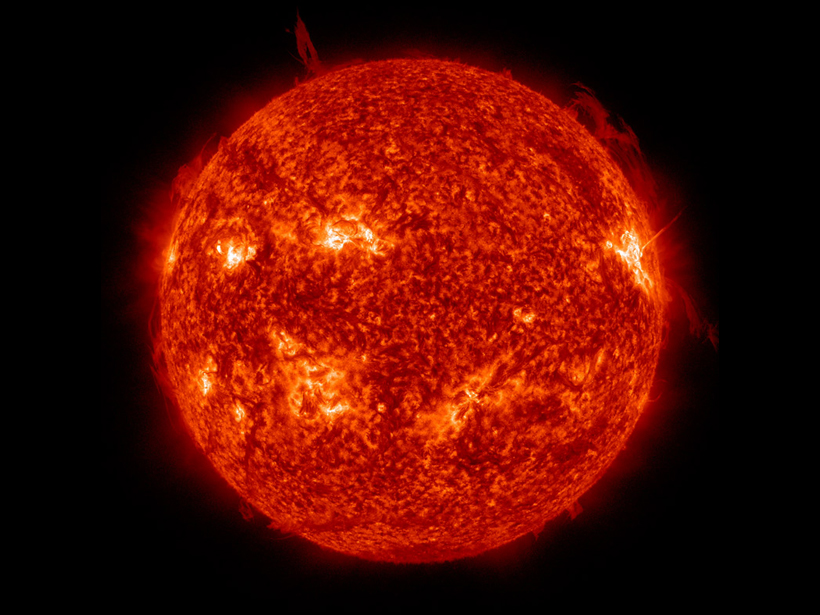Source: Earth and Space Science
Scientists often rely on two important metrics in quantifying the amount of solar energy transmitted to Earth: total solar irradiance (TSI) and solar spectral irradiance (SSI). TSI measures the total solar power per unit area that reaches Earth’s upper atmosphere across all wavelengths. SSI also measures the solar power per unit area, but at discrete wavelengths within a certain range and with a certain resolution that is determined by the instrument making the measurements.
Tracking and modeling variations in the Sun’s output, which can vary significantly on timescales ranging from minutes to centuries, are crucial tasks in building a more complete understanding of Earth’s climate. Recently, researchers have relied on models of TSI and SSI developed by the U.S. Naval Research Laboratory (NRL) and known as NRLTSI2 and NRLSSI2.
The most reliable way to validate model outputs is by comparing them with satellite-based measurements. Humans have been collecting such data for only about 40 years, and many gaps exist both in time and in which wavelengths satellite instruments have recorded. To fill gaps and extend the record further into the past, scientists rely on models that use historical indicators of solar activity, such as sunspot numbers and cosmogenic isotopes preserved in tree rings and ice cores.
In a new study, Coddington et al. validate NRLTSI2 and NRLSSI2 by comparing them with independent models as well as with space-based observational data, especially from NASA’s Solar Radiation and Climate Experiment (SORCE). The researchers focused on measurements of both TSI and SSI at timescales ranging from days to a decade and eventually spanning the entire era of space exploration.
They found good agreement in TSI estimates between NRLTSI2 and the SORCE data set on solar rotational timescales (roughly 1 month) as well as over a single solar cycle (about 11 years).
Validating NRLSSI2 proved more challenging. The researchers found that the model performed well over short timescales and at ultraviolet and visible wavelengths when compared with observational estimates of SSI from SORCE and other missions, including the Ozone Monitoring Instrument and the Solar Irradiance Data Exploitation SSI composite. At wavelengths above 900 nanometers, though, the team could not validate the model because of instrument noise in observational data sets. Similarly, NRLSSI2 could not be validated on solar cycle timescales because there was not enough agreement among other data sets for a comparison to be made.
The researchers highlight these gaps as areas for future study and suggest that both NRLTSI2 and NRLSSI2 are still valid tools for assessing the Sun’s influence on Earth. (Earth and Space Science, https://doi.org/10.1029/2019EA000693, 2019)
—David Shultz, Science Writer
Citation:
Shultz, D. (2020), Observational data validate models of Sun’s influence on Earth, Eos, 101, https://doi.org/10.1029/2020EO136565. Published on 02 January 2020.
Text © 2020. AGU. CC BY-NC-ND 3.0
Except where otherwise noted, images are subject to copyright. Any reuse without express permission from the copyright owner is prohibited.

